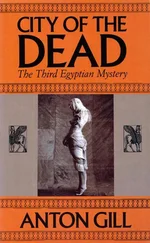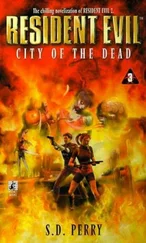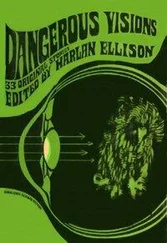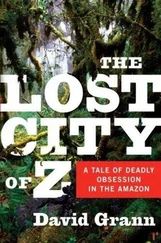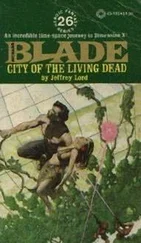“More like guards, Paul.” Carslin’s manner, now that he’s had substantial concessions, is suddenly full of solicitude and warm regard for his old teacher. “Robinson had been isolated, put in solitary confinement, for at least two weeks before his death.”
“That’s because he was a goddamned troublemaker,” Benjamin snarls. “You know that as well as I do, Carslin. Daily fistfights and quarreling with other prisoners and guards.”
“So I’ve been told.” Carslin shrugs. “Be that as it may, however, he was in solitary confinement. Other prisoners simply could not have gotten at him.”
“Guards, prisoners, whatever,” says Konig with sudden irritability. “The fact remains he was beaten. I concede that. I concede that my office neglected to carry out the requisite tests to determine that he was beaten. I concede that the ME report stating that Robinson’s injuries were caused as a result of the body falling to the floor while it was being cut down from where it hung in the cell—that, too, was wrong. Wildly wrong. I concede that.” Konig gazes around at the three men gathered there, staring back at him raptly. “But I think also—” his gaze suddenly drops on Carslin like a trap—“that Dr. Carslin would have to concede to me that those same superb tissue preparations of his also reveal that the wounds shown there are at least forty-eight hours old.”
“The implication being that”—Binney leans quickly forward on his desk—“Robinson died at least two days after the beating was inflicted?”
“That’s right,” says Konig.
“And that the wounds, in and of themselves, were not the direct cause of death?”
“That’s right.” Konig smiles wearily at Carslin. “You neglected to mention that in your excellent report, Charley.”
Benjamin laughs out loud, but his hilarity is immediately quashed by a portentous arching of the District Attorney’s brow.
“How can you be sure of this, Paul?” Binney asks.
“Ask Dr. Carslin. He’d be glad to tell you.”
“Is this true, Dr. Carslin?” Binney turns to face the young pathologist. “Were these wounds shown here in your photographs and tissue slides really inflicted forty-eight hours before death?”
“Yes, sir,” Carslin murmurs a little grimly. He is no longer smiling. “What Dr. Konig so shrewdly points out is the simple, incontrovertible fact that a human body responds to injury by mobilizing thousands of white blood cells—we call them leukocytes—at the site of injury. This is a vital reaction. It can occur only in a living animal. There are several basic types of this white blood cell and they arrive at the wound in fairly regular sequence. It’s a process that takes from two to forty-eight hours. Repair cells become abundant about twenty-four hours after the injury has been sustained, and these scar-tissue cells, along with the leukocytes, are spotted quite easily through the microscope. In the tissue specimens we took from Robinson’s body, the number and types of cells present suggest not only that the wounds had been inflicted while he was still alive, but also about forty-eight hours before death.”
Carslin’s voice drops an octave or so in tone as he concedes this last point. Some of the starch has definitely gone out of him.
“Very interesting.” The Deputy Mayor beams happily for the first time that morning.
Carslin’s face has gone a deep red. “What the hell does that mean? Only that he didn’t die directly after the beating. It doesn’t say that he didn’t die as a result of the beating. I defy Dr. Konig to examine the fracture line in this X ray of Robinson’s skull and assert that a skull injury of that magnitude could not cause death—even forty-eight hours after having been inflicted.”
All eyes now shift back to Konig, who appears to be very carefully weighing his reply. “I’ve already conceded a number of things here this morning,” he sighs wearily in his chair. “That Robinson’s injuries were sustained while he was still alive; that they were undoubtedly inflicted during the course of a beating; that the Medical Examiner did not carry out the requisite tests to determine that such a beating took place. I have conceded all that. I have even repudiated the Medical Examiner’s conclusions as to the actual cause of death. Now, yes—I will also concede Dr. Carslin’s last point. Such injuries as the one shown here in this X ray can, in certain instances, be judged the direct cause of death even forty-eight hours after they’re inflicted. I concede that to you, Charley, but, unfortunately, that is not the case here.”
There’s a moment of total silence which the three men struggle to digest the significance of Konig’s final point. Then suddenly Carslin is on his feet shouting. “Not the case here?” he bawls across the room. “Not the case here?”
“That’s what I said.” Konig lifts an X ray from the desk. It shows a skull in profile with a long, dark, clearly verifiable fracture line running along the side of it. “As a matter of fact,” he continues, “while this fracture is long, it’s trivial.”
“Trivial? Trivial?” Carslin splutters, unable to find another word. “You have the colossal gall to sit there and describe that fracture as trivial? I dare say, it might seem trivial to you. I bet it didn’t seem very trivial to poor Robinson at the time they bashed his head.”
“I object to your use of the word ‘bashed,’” snaps Benjamin.
“Well, I assure you it was no love tap that produced that fracture.” Carslin flings another X ray down hard on the desktop beneath the Deputy Mayor’s nose.
“Who’re you kidding, Carslin?” Benjamin sneers. “You’re not interested in this Robinson boy. You’re just out to make a big name for yourself by portraying the prison system of this city as inhuman, barbaric. Something out of the Dark Ages.”
“Well, isn’t it?” Carslin is on his feet again, shouting. “Don’t these X rays and tissue studies prove just that? And I object to your suggesting—this is the second time now—that I’m trying to make a name for myself just because I’m looking for the truth. Would any of this have come out if I hadn’t been looking for the truth? Not if it was up to you. Not if it was up to Paul Konig. This is all too embarrassing, isn’t it? Could cause a scandal. So let’s keep it quiet. Right? All I can say is, thank heavens for the vigilance of a mortician in Yonkers who had the perspicacity to see great disparities between the Medical Examiner’s report and what he could see directly before his eyes.”
“You have just suggested,” Benjamin says between clenched teeth, “that the Department of Corrections, the Medical Examiner’s Office, and the Mayor’s Office are in a conspiracy to suppress—”
“By God, yes,” Carslin shouts. “That’s exactly what I’m suggesting.”
“Gentlemen, gentlemen”—Binney pounds the desk with an open palm—“we’re straying from the point. We’re not here this morning to judge the merits of the City penal system. What we want to determine is the cause of Robinson’s death, and whether or not there is sufficient evidence here surrounding the circumstances of the boy’s death to convene a grand jury. Paul”—Binney turns back to Konig—“a moment ago you described these skull injuries as ‘trivial.’”
“Trivial!” Carslin laughs bitterly.
The District Attorney scowls at Carslin above his glasses, then continues. “What exactly did you mean by ‘trivial’?”
Konig pauses, his manner suddenly guarded and uneasy. “I meant,” he says at last, “that in all these X rays of the deceased’s skull, and in our own examination of the brain at the time of the first autopsy, we found no visible sign of gross injury or hemorrhage to the brain. I don’t think Dr. Carslin can refute that.”
Читать дальше


